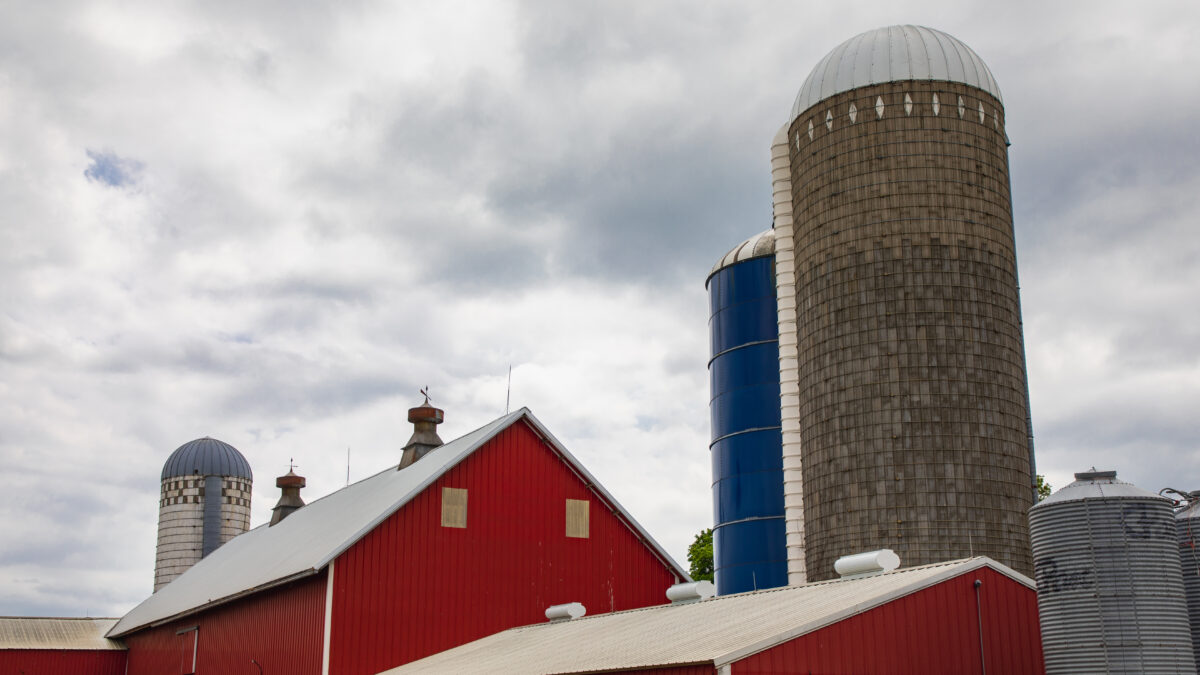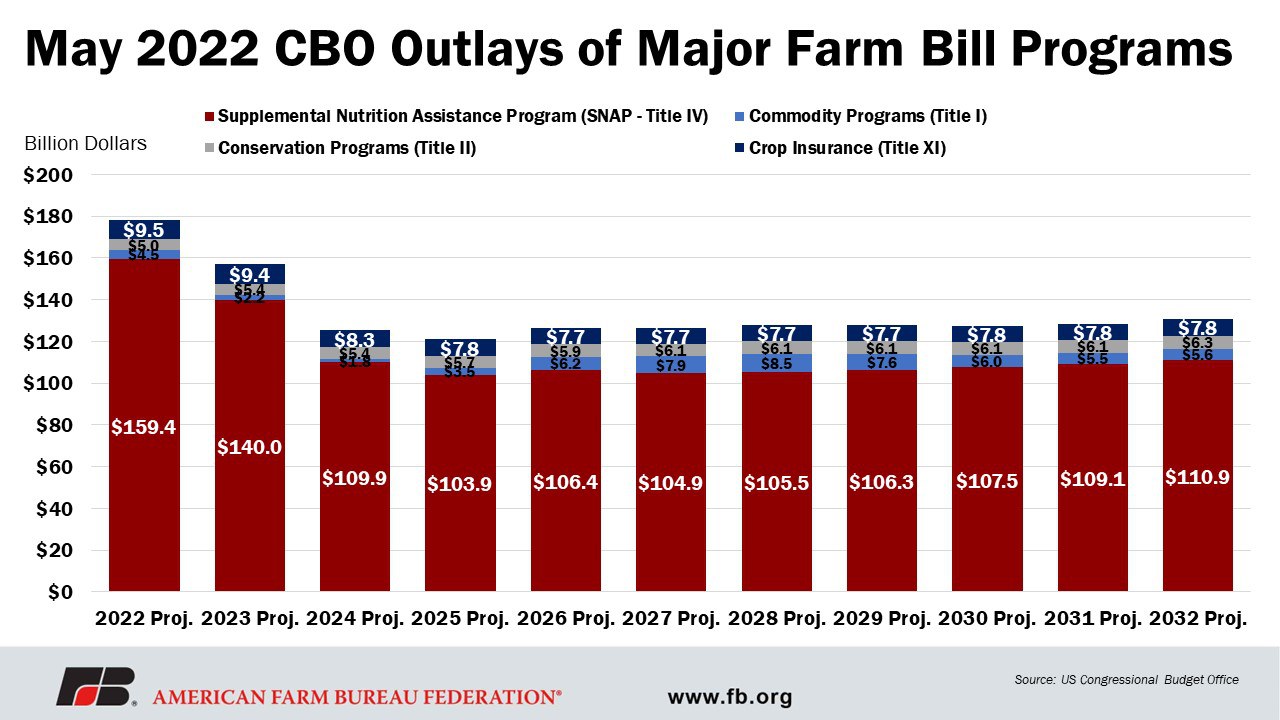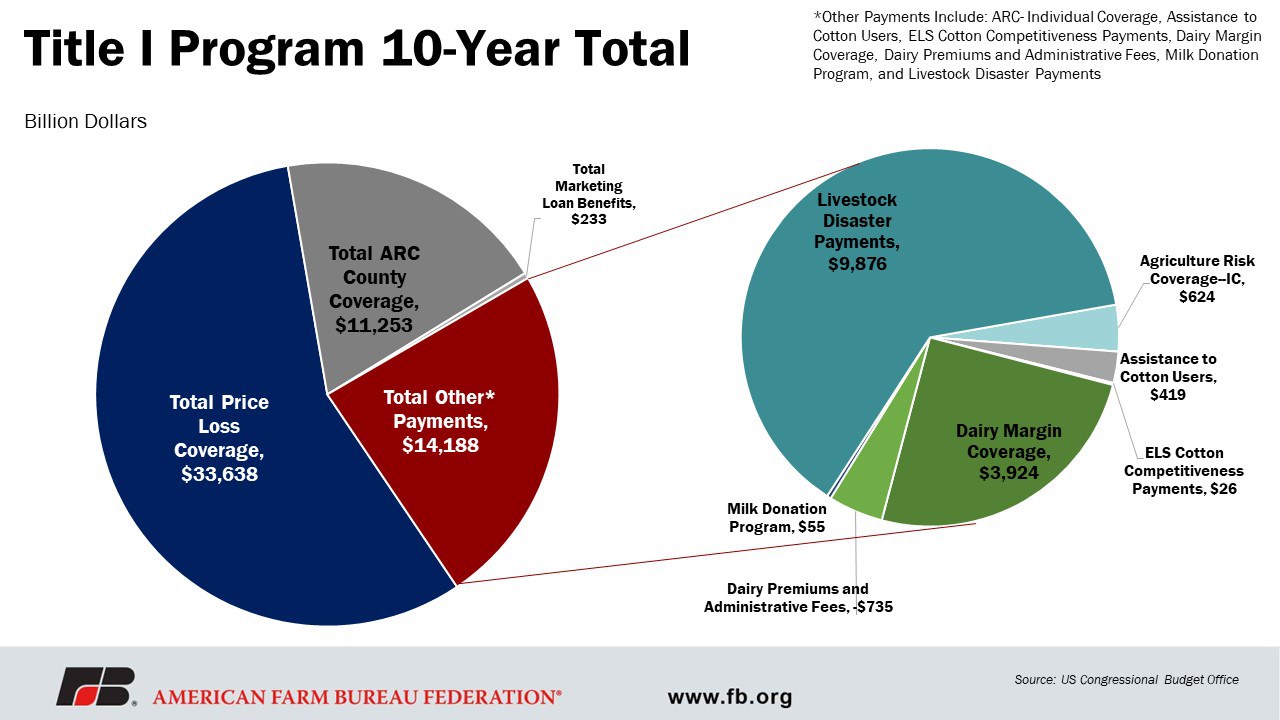

Going back almost 100 years, the history of the farm bill largely tracks the history of food production in the United States as the legislation evolves to meet the needs of its modern-day constituents – farmers and consumers. Agriculture’s role in providing food security, and in turn national security, to the United States is more important than ever. And now, work on the next farm bill has started during a period of volatility on every front – political, economic and beyond. So why is this food and farm bill so impactful and influential?
A background and brief history of the farm bill is provided here, as well as a title-by-title description, including the programs encompassed in each title. This article is the first of a series of Market Intel articles that will dive deeper into farm bill programs.
Background
For starters, the farm bill holds a lot of statutory power, but it also has a little something for everybody. From farm program payments and food policy to conservation initiatives and rural development, the farm bill provides mandatory and discretionary funding for many everyday programs and functions whose impact and influence carries across all social demographics and regions.
Farm bill passage and implementation has a unique timeline with serious consequences if lawmakers fail to adhere to it. Its five-year lifespan provides lawmakers the opportunity to update the programs so they are relevant to current market and economic conditions. There have been 18 farm bills since the 1930s. If the farm bill were to expire without a new bill in place or if programs were not granted an extension by Congress, all of the programs would return to the 1949 bill, meaning reverting to support price programs for the limited number of commodities covered by the 73-year-old law. Adjusted for inflation, these support prices would be far above even the current elevated market. This helps drive the urgency farmers and ranchers – and Congress – feel about passing this legislation in a timely manner.
What is the Farm Bill?
The farm bill refers to an authorization of mandatory and discretionary spending bills appropriated to provide assistance related to food and farms. It is a multi-year law that is primarily executed by the United States Department of Agriculture (USDA) and it governs a wide variety of agricultural and food programs. First created to help struggling farmers in the 1930s, the farm bill has expanded to be a resource to help the industry grow and thrive in an ever-evolving world. The current farm bill, the Agriculture Improvement Act of 2018, is set to expire on Sept. 30, 2023. To prepare for the 2023 farm bill, discussions about how best to address the issues of agriculture have already begun. These will be especially important given what the agriculture sector has been up against over the past few years and the various unknowns farmers and ranchers face.
The farm bill provides an important consistent opportunity for policymakers to address agricultural and food issues comprehensively. It has grown over the decades to serve food and agriculture, but its roots are in farm commodity program support. These traditional support commodities include corn, cotton, wheat, soybeans, rice, dairy, peanuts, and sugar. The farm bill has expanded and broadened to include nutrition assistance, conservation, research, specialty crops and bioenergy programs. Because of this, the farm bill brings together some of the most unlikely partners to advocate for a legislative package composed of provisions that would likely not survive the legislative bureaucracy as stand-alone measures.
The farm bill continues to be entangled in political debates and ideological policy conversations. Over time, programs have been adjusted to respond to the market and economic pressures of agriculture, the U.S. and the world. As ideas are collected for future farm bills, even in today’s debate, the question remains the same: how can the farm bill best serve its constituents?
Titles of 2018 Farm Bill
Title I: Commodities and Disaster
The commodity title has provided certainty and predictability to eligible producers by reauthorizing and improving commodity, marketing loan, sugar, dairy and disaster programs.
Title II: Conservation
The conservation title provides voluntary conservation programs that farmers and ranchers use to improve their productivity and address natural resource and, increasingly, environmental concerns.
Title III: Trade
Post-World War II and post-Korean War conditions in agriculture created a need to focus on trade and trade development programs.
Title IV: Nutrition
First created with the Food Stamp Act of 1964, the nutrition title is a pillar in farm bill discussions, of particular interest to urban voters and their representatives.
The credit title of the farm bill provides lending opportunities that private commercial entities cannot offer.
Title VI: Rural Development
The rural development title has held a spot in the farm bill since 1973 with the purpose to create and support new competitive advantages in rural areas.
Title VII: Research
When the United States Department of Agriculture was created in 1862 it was primarily charged to support agricultural research. Serving, technically, as the oldest title of the farm bill, stemming from the Morrill Land Grant Act of 1862, the purpose was to establish and fund research in land grant institutions in each state.
Title VIII: Forestry
First created in the 2002 farm bill, the forestry title provides authority for the United States Forest Service, which is the principal federal forest management agency.
Title IX: Energy
Renewable energy, primarily ethanol and biodiesel production, was spurred through the Renewable Fuel Standard, which is not included in the farm bill. However, it created interest in the development of farm bill programs regarding energy.
Title X: Horticulture
The horticulture title is designated to specifically support specialty crops and certified organic and local foods.
Title XI: Crop Insurance
The crop insurance title provides new and continued insurance products for producers to purchase in a public-private partnership. The insurance helps protect producers against losses resulting from price and yield risks on over 445 million acres, in addition to a growing assortment of policies for animal agriculture.
Title XII: Miscellaneous
The miscellaneous title holds a variety of programs. In most cases, these programs either do not have a “home title” or are individual programs to address specific problems. In the 2018 farm bill, the miscellaneous title primarily focused on livestock programs, agriculture and food defense, historically underserved producers, limited-resource producers and other miscellaneous provisions.


The Nutrition Title
Another question that pops up every five years or so: is it a farm bill or a food bill or both? The nutrition title is the most expensive title in the farm bill, dominating almost 80% of the bill’s spending. It governs programs utilized by people who cannot afford to buy food in times of difficulty. As part of the federal welfare program portfolio, there is criticism from some quarters about the title’s spending levels. This has made the nutrition title a political bone of contention through decades of farm bill debate, but critical to building a coalition of support.
Farm Bill Politics
The farm bill has historically been a bipartisan effort. Some legislators’ concentrate on the nutrition portion of the farm bill given the constituent interest in their state and/or district, while other legislators concentrate on the commodity programs due to their constituents’ interests. More often, geography is a factor. The “Traditional Farm Coalition” includes corn in the Midwest, cotton in the South, and wheat in the Great Plains. The “Expanded Traditional Farm Coalition” includes soybeans with corn in the Midwest, peanuts with cotton in the South, and rice in the Mississippi Delta region. What pits the farm coalition against itself? Historic ideology regarding farm policy.
Given the dwindling farm and ranch population, there lies significant uncertainty for the farm coalition to get enough “yay” votes, thus the coalition of support for the farm bill has broadened tremendously, growing the bill to secure enough votes to pass it.
A more recent farm bill evolution is the expectation that farmers protect the environment, prompting environmental groups to lay claim to the legislation too. Similarly, the rural/urban coalition has worked to educate about nutrition programs’ benefits beyond high-density populations and shown value to their inclusion in the farm bill. Moreover, since its inception, the farm bill has brought more and more stakeholders to the discussion, including national farm groups, commodity associations, state organizations, nutrition and public health officials, and a variety of advocacy groups for conservation, recreation, rural development, local food systems, and certified organic production.
Why Does the Farm Bill Matter?
The farm bill ensures a safe and abundant food supply, helps feed the hungry, invigorates rural communities and helps farmers take care of the environment as they continue to provide food, feed, fuel and fiber to the United States and the world.
On the farm side, those utilizing farm bill programs value risk management tools that offer certainty and predictability. Tools like crop insurance products, marketing loans and commodity programs help producers manage through tough times in order to be able to pass the family farm on to the next generation. Families are able to put dinner on the table thanks to nutrition assistance programs. Voluntary, market-based incentives in conservation programs help provide producers with the tools and assistance needed to implement soil and water improvements. Rural communities have access to tools like broadband grants and new business loans authorized by the farm bill to help enhance economic development and attract growth.
Just as agriculture changes and adapts to meet the needs of the time, the farm bill is called upon to do the same to serve the needs of its constituents. Every five years or so, Congress passes a new farm bill to meet the challenges of an ever-changing world and ensure that critical programs continue to work for farmers and ranchers, families on a budget, and rural communities working to stay competitive.
Summary
The farm bill – or as it could be called, the food and farm bill – has supported U.S. agriculture for almost 100 years, providing safe and affordable food, feed, fuel and fiber for the country and the world. It provides mandatory and discretionary funding to a number of everyday programs and functions to support food security, and in turn national security, for the U.S. Hearings on the 2023 farm bill have already started in Congress.
The American Farm Bureau Federation has reconvened its Farm Bill Working Group with representation from all 50 states and Puerto Rico so that priorities fully backed by the entire AFBF organization can be set. The working group’s analysis will help Farm Bureau members across the country at the county, state and national levels discuss and adopt Farm Bureau policy, which serves as a roadmap for us to engage with Congress. While assessing the 2018 farm bill, Farm Bureau members need to consider: what is working and what is not and how the legislative package could be made better? When looking toward the 2023 farm bill, how have economic conditions changed in the past few years and what forecasted conditions do farmers and ranchers need to be prepared for? The answers to these questions will shape food and agriculture for the next five years and beyond.